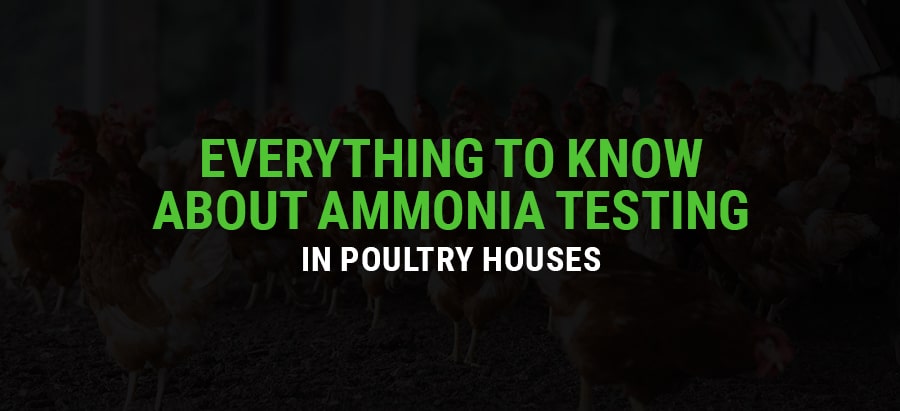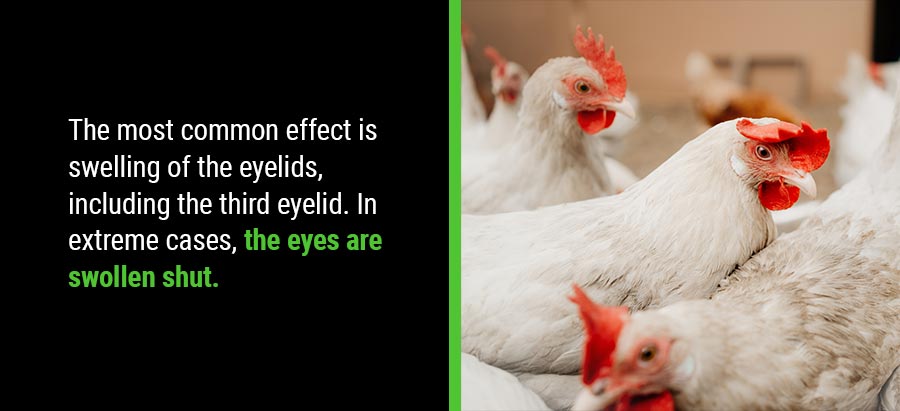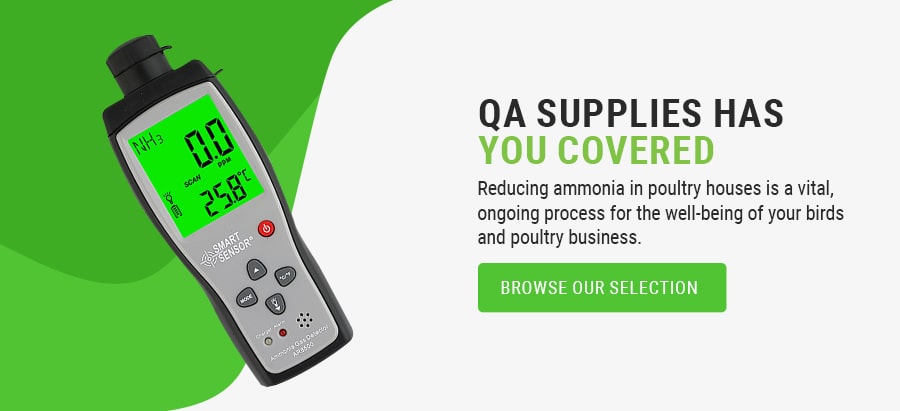Everything to Know About Ammonia Testing in Poultry Houses
Mar 3rd 2023

If a pungent odor fills the air in your poultry house, you may have a serious situation on your hands. Ammonia is a toxic and harmful gas that can cause immeasurable damage if left unchecked, including the death of your flocks and serious financial drawbacks. It's also natural and unavoidable if you have a chicken farm. Frequent testing can prevent ammonia from causing severe diseases in your flocks.
Whether you have experience managing chicken farms, are just getting started or want to do some general research, this guide covers everything you need to know about ammonia testing in poultry houses. We look at what causes ammonia, why testing is essential and how to test for ammonia.
What Is Ammonia and Where Does It Come From?
Ammonia is a strong-scented gas caused by the chemical breakdown of your flock's fecal matter. A specific bacteria in your litter or bedding decomposes the uric acid found in the stools. If enough of the gas builds up, you can easily smell a pungent stench in your barn or chicken houses. Whether ammonia builds up in your poultry house depends on the flock's living conditions and how well the building is ventilated. Ammonia is a natural part of fecal matter decomposition that cannot be eliminated. However, you must manage the ammonia gas levels in your poultry house to maintain a healthy flock.
Certain elements contribute to how bacteria degrades the uric acid in your flock's droppings, including:
- The moisture content of your poultry house
- The litter's pH levels
- The temperature of your litter
The main contributors to high levels of ammonia in your poultry house include the following:
- Poor airflow through your poultry house
- Unmanaged fecal matter or loose droppings
- Poor management of the moisture and temperature of your bedding
All these factors result from having wet litter in your poultry house. Wet litter creates a breeding environment for bacteria and other gases as droppings decompose. These gases are intensified by the moisture, high pH levels and hotter temperatures in your litter and poultry house and lead to health issues in your birds.
Why to Test Ammonia Gas in Poultry Houses
Though ammonia occurs naturally, high levels can cause serious problems. The effects of high ammonia levels on poultry can be deadly. Regular testing helps you regulate ammonia levels to ensure they never become problematic. For a comprehensive approach, using products like the UltraSnap ATP Surface Test can help monitor surface cleanliness and maintain a healthy poultry environment.

Effects of Ammonia on Chickens
High concentrations of ammonia in the air can lead to multiple health complications in your flocks, resulting in death and profit loss.
Ammonia toxicity can cause severe respiratory damage in your birds. The gas affects your bird's mucosal trachea surface and can result in injury, loss of certain respiratory functions or paralysis. This damage to your bird's trachea affects its breathing overall and can result in death.
Prolonged exposure to high concentrations of ammonia gas can also cause eye damage. The most common effect is swelling of the eyelids, including the third eyelid. In extreme cases, the eyes are swollen shut. Eyelid swelling increases the chances of your bird catching further infections, leading to cornea damage.
Ammonia can dramatically decrease your birds' life span, feed conversion and ability to grow appropriately and gain weight. The gas can cause a significant loss of flocks, resulting in a loss of profits for farm managers or growers. Treating the various illnesses and diseases your birds may contract due to ammonia exposure can also become expensive.
Where and How to Measure Ammonia in Poultry Houses?
Because ammonia is a gas, you need to test the air in your barn or poultry house. Be sure to run your tests at bird level so you're testing the air your birds breathe for high ammonia levels. Ammonia is measured in parts per million (ppm), and should be kept below 25ppm for safety.
Different factors contribute to high ammonia levels in your barn. For example, each of these factors, like pH levels, has a specific measuring tool. Ammonia has three different tools and methods for testing. Here are the tools and techniques you can use to test your chickens for ammonia.
Top Three Methods for Ammonia Testing in Poultry Houses
- Poultry ammonia detector: These digital devices test the air and detect ammonia levels. They have a screen displaying the readings in parts per million. These devices are accurate, portable and simple to use. They require little maintenance and only need calibration twice a year. Poultry ammonia meters make chicken ammonia testing a quick and straightforward process.
- Hydro ammonia test paper: These small paper strips are water-activated. Once moist, position the piece of paper in your flock's breathing-air range for a few seconds. The strip will change color according to the level of ammonia in the air. Then match the color with the corresponding color on the measuring specs to get a reading. The color readings range from 0 to 100 or more ppm of ammonia. Test papers are inexpensive and fast to use to get a range of ammonia levels in your barn.
- Ammonia detection pull tubes: These tubes use a color metric to measure the amount of ammonia in the air. As with the other testing methods, you should measure the air in your birds' breathing range. Detection tubes are perfect for doing ammonia spot checks. These tubes and an air sampling pump draw precise amounts of sample barn air through a manual pump that looks like a giant syringe. Once the glass tube breaks off on both ends, it will read the ammonia level in the tested air.
QA Supplies Has You Covered
Reducing ammonia in poultry houses is a vital, ongoing process for the well-being of your birds and poultry business. Testing is the only way to know how much ammonia is in your poultry house at any given moment and the best warning for an emerging ammonia crisis. The various, inexpensive ammonia testing methods make keeping your flocks healthy easier.
At QA Supplies, we aim to help you run a healthy operation. We want to take the stress out of caring for your flocks correctly and ensuring they are in the best living conditions. Testing helps you avoid having prolonged high levels of ammonia filling the air in your poultry house and damaging your flock's health. Get the right ammonia testing tools and sensors to keep your poultry healthy and safe.


